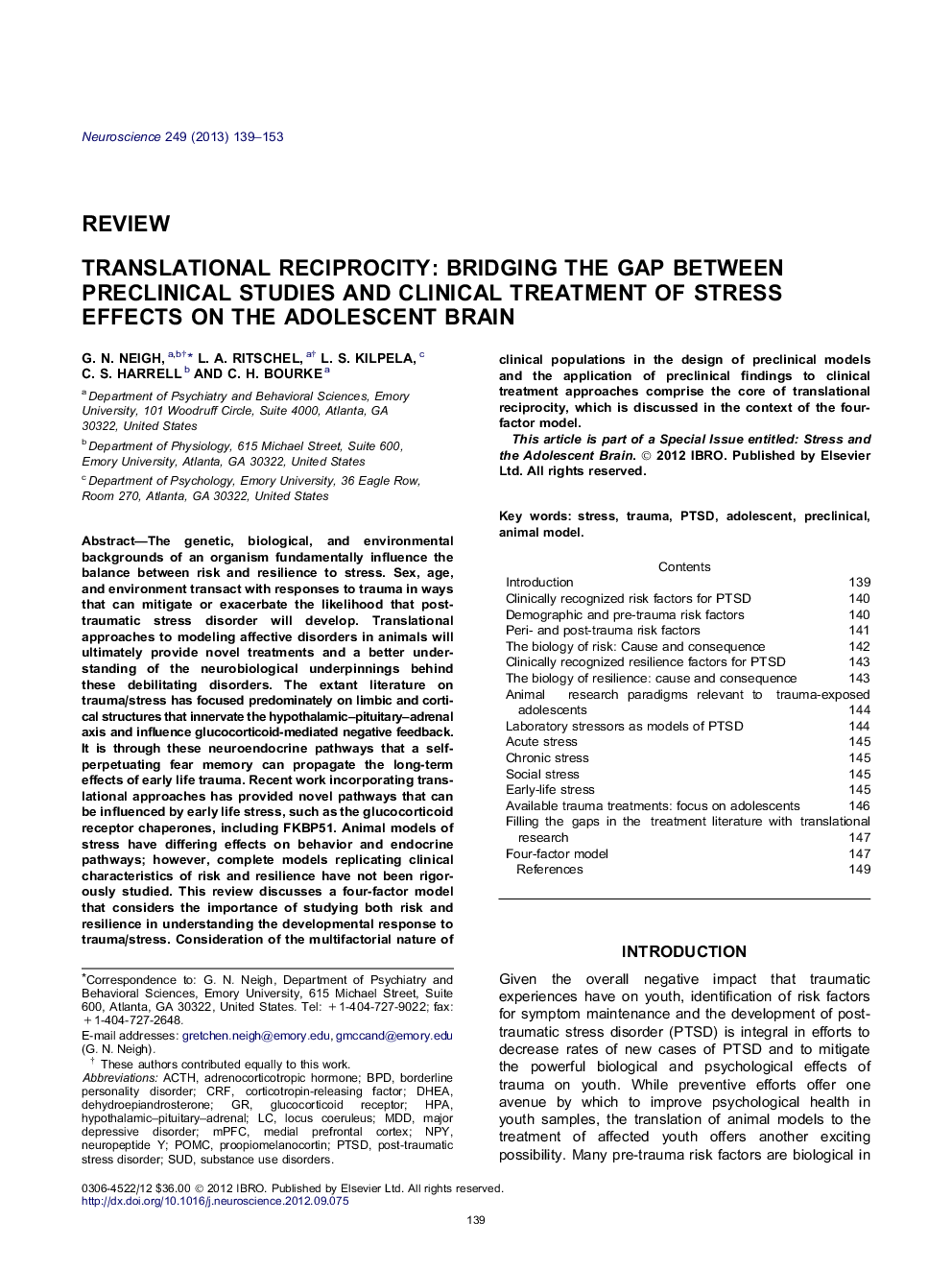| Article ID | Journal | Published Year | Pages | File Type |
|---|---|---|---|---|
| 4337896 | Neuroscience | 2013 | 15 Pages |
The genetic, biological, and environmental backgrounds of an organism fundamentally influence the balance between risk and resilience to stress. Sex, age, and environment transact with responses to trauma in ways that can mitigate or exacerbate the likelihood that post-traumatic stress disorder will develop. Translational approaches to modeling affective disorders in animals will ultimately provide novel treatments and a better understanding of the neurobiological underpinnings behind these debilitating disorders. The extant literature on trauma/stress has focused predominately on limbic and cortical structures that innervate the hypothalamic–pituitary–adrenal axis and influence glucocorticoid-mediated negative feedback. It is through these neuroendocrine pathways that a self-perpetuating fear memory can propagate the long-term effects of early life trauma. Recent work incorporating translational approaches has provided novel pathways that can be influenced by early life stress, such as the glucocorticoid receptor chaperones, including FKBP51. Animal models of stress have differing effects on behavior and endocrine pathways; however, complete models replicating clinical characteristics of risk and resilience have not been rigorously studied. This review discusses a four-factor model that considers the importance of studying both risk and resilience in understanding the developmental response to trauma/stress. Consideration of the multifactorial nature of clinical populations in the design of preclinical models and the application of preclinical findings to clinical treatment approaches comprise the core of translational reciprocity, which is discussed in the context of the four-factor model.
Graphical abstractFigure optionsDownload full-size imageDownload high-quality image (83 K)Download as PowerPoint slideHighlights► Risk and resilience are both key components of stress and trauma studies. ► Preclinical models should be designed with clinical observations in mind. ► The move toward personalized medicine will be facilitated by better preclinical models. ► We present a four-factor model of risk and resilience as a theoretical construct for model design.
